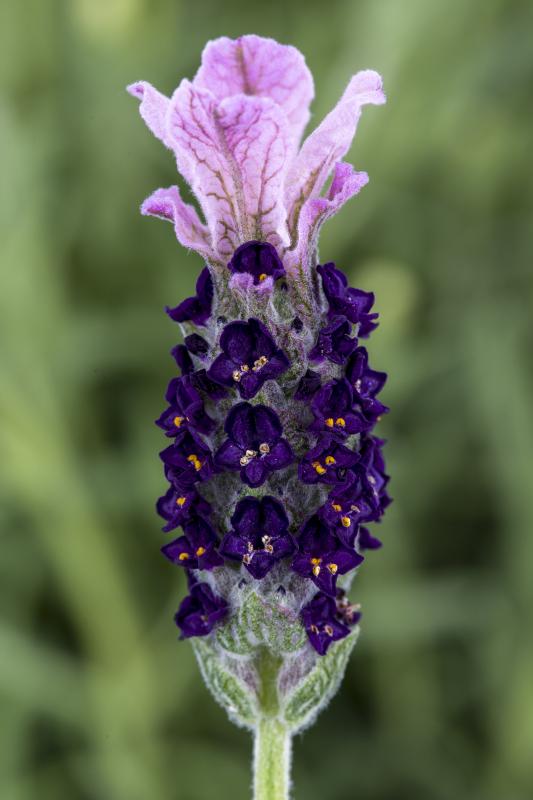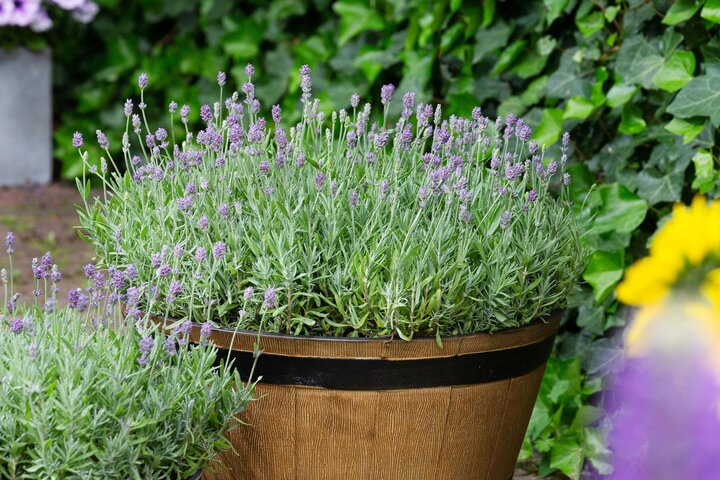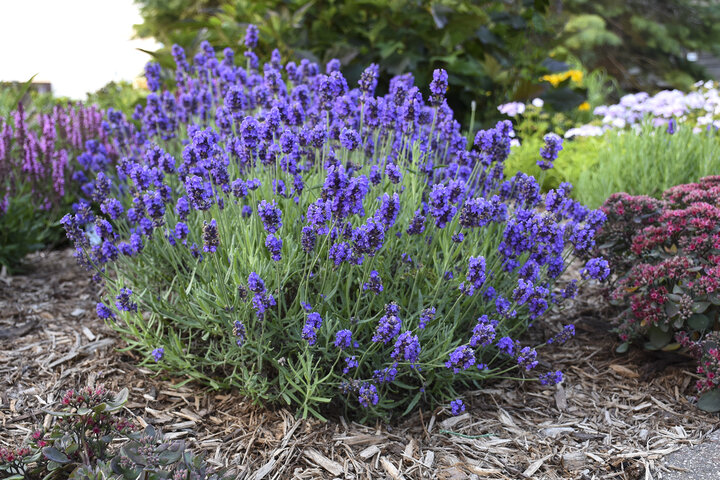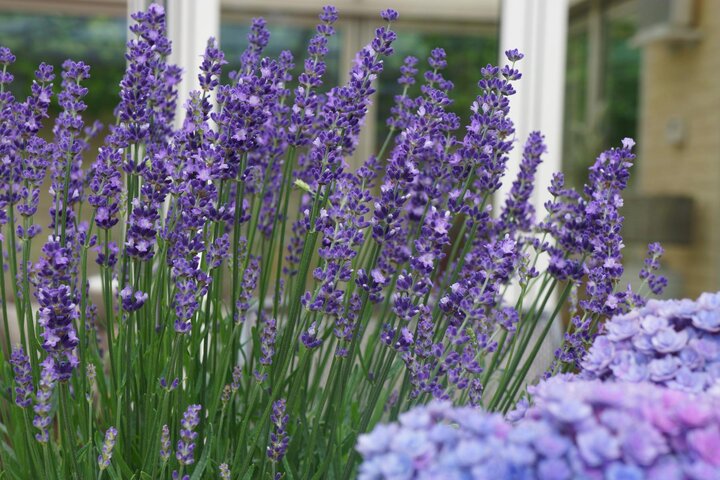Sarah Browning, Nebraska Extension Educator

Spanish lavender 'Castilliano Lilac', very uniform and vigorous plants, height 12-14". Images from the National Garden Bureau.
This year the National Garden Bureau has chosen lavender as their perennial of the year. The “Lavender Lifestyle” is real! Everywhere you look, people are incorporating this multifaceted plant into their daily lives. It’s seen in gardens, as well as in kitchens and décor. It’s even a special part of health and wellness routines. The texture, scent, attractiveness, and overall usability of lavender make it one of the most versatile plants you can grow.
Lavender is a member of the mint family (Lamiaceae) and is found in many regions around the world, especially temperate climates. The most common types are English lavender (L. angustifolia) and Spanish or French lavender (L. stoechas or L.dentata)

English
is the hardiest in terms of garden performance. There are several varieties, such as Hidcote, Munstead or SuperBlue, that have been trialed to overwinter reliably through USDA Zone 5.
English lavender blooms sit on spikes rising tall above a gray-green base of leaves. Both the florets and foliage are heavily scented. The plants flower mostly in pink-purple colors, but some silver-white varieties exist as well.
It can grow as high as 3 to 6 feet (1-2 m) depending on your region, but most of the top-selling varieties today are dwarf styles, which grow in a more manageable height of 6-24 in. (15-60 cm). Additional varieties of English lavender include Annet, Aromatico, Big Time Blue, Blue Spear, Ellagance, Lady, AAS Winner Lavender Lady, Lavance, Sentivia, Sweet Romance and Vintro, among others.

Spanish and French...
are evergreen plants native to the Mediterranean region. Their leaves are longer than English lavenders and gray-green. The taller flower stems are topped with thicker pink-purple pinecone-like flower clusters crowned with similarly colored bracts.
These lavender types are more fragile than English varieties and are less winter hardy (USDA Zones 6-9). So unfortunately plants don’t survive Nebraska winters unprotected outdoors. However, it still has a very attractive fragrance and is very attractive to bees. It’s an excellent pollinator-friendly option for your garden or patio containers
Some reblooming Spanish lavenders, such as the Anouk or Bandera series, flower heavily in the spring with a second flush of flowers later in the growing season.
Spanish and French lavender work well indoors, too, and can be a scented décor or gift item. Additional varieties include , Javelin Forte, LaVela, Papillon and Primavera among others.

Ideal Growing Conditions
Lavender grows best in full sun in dry, well-drained soil; it does not like saturated roots. All lavender types need little or no additional fertilizer, but be sure to provide good air circulation. With Nebraska's high summer humidity, watch out for root rot fungal infections. This is sometimes aggravated by using organic mulches, which can trap moisture around the base of the plant.
Planting lavender as a front border means you’ll see it up-close. Feel free to run your fingers through the soft foliage and enjoy the fragrance! Lavender can also be planted in a mixed patio container with other sun-loving plants, or by itself as a fresh way to scent the air in a small space.
DIY
The flowers and leaves of lavender plants are used in many herbal medicines and self-care regimes. Homemade projects and recipes include herbal teas, culinary spices, essential oils, aromatherapy, balms, and more. It is widely added to bath salts, soaps, soaks, perfumes, etc., for a fresh fragrance and calming effect.
As a strong-scented herb, dried lavender florets can be used in the home closet as a fragrant sachet pillow that can ward off moths. French chefs use lavender in a blend called herbs de Provence, which adds a fragrant spice to both savory and sweet dishes.
All of these uses add up to quite a versatile and enjoyable flower that’s become a must-have in gardens and homes around the world. And it’s easy to see how 2020 can be your Year of the Lavender!
For more information on this year's featured plants, including sources of lavender plants, visit the National Garden Bureau.www.ngb.org. The National Garden Bureau recognizes and thanks Ball Horticultural Company, an NGB member, as author and contributor to this fact sheet.
Images from the National Garden Bureau.
- English lavender 'Cleo Patio', develops into a compact uniform plant 10-12 inches tall.
- English lavender 'Sweet Romance', silvery-green foliage with blue-purple flowers, height 12-18'
- English lavender 'Big Time Blue', big abundant flowers on silvery green plants, height 18-20"
Search Our Archive
Associated Video
Nebraska Lavender
Jerry McCabe of Sleepy Bee Lavender farm talks about growing lavender in Nebraska